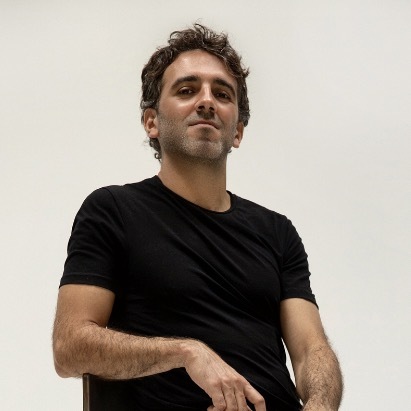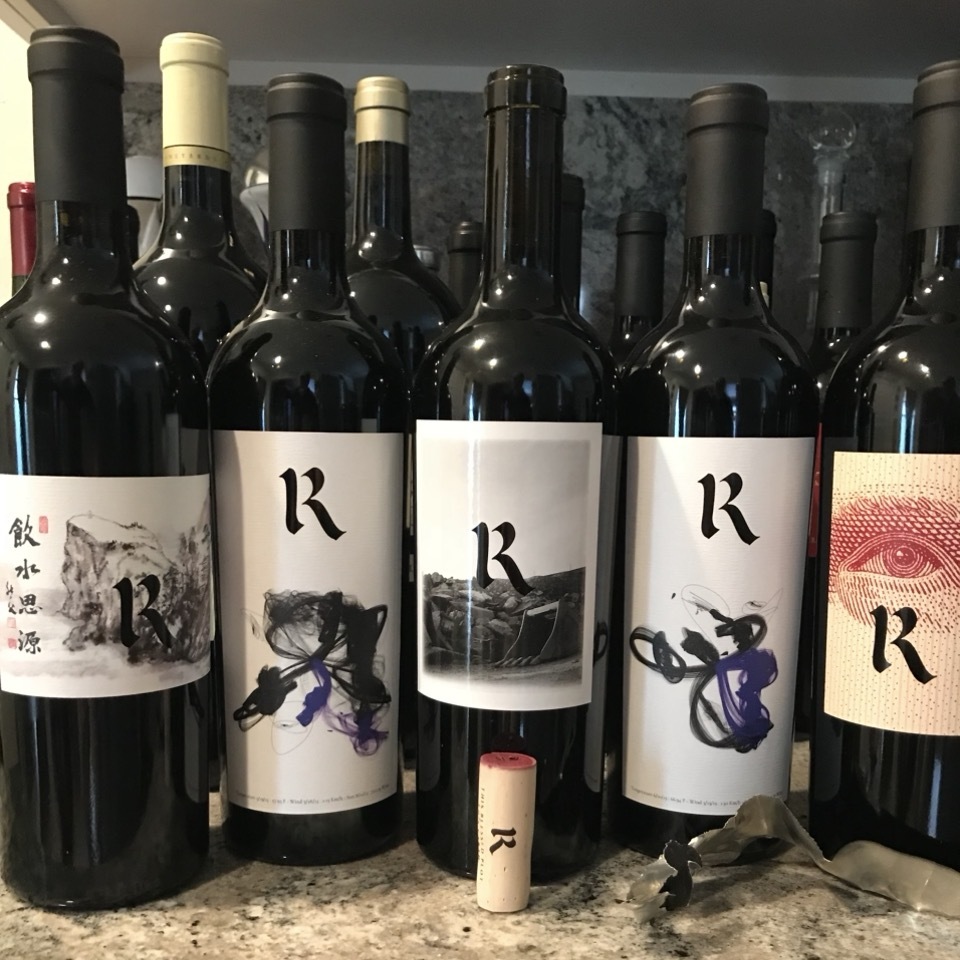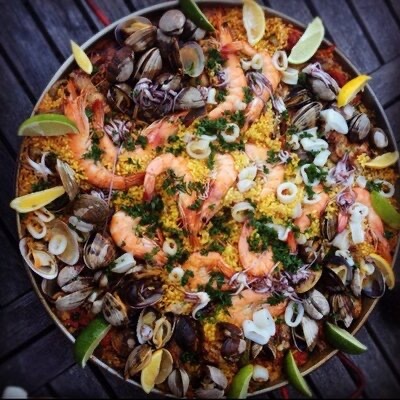Descendant Cellars
Kita
Camp 4 Vineyard Cabernet Sauvignon 2014

Torbreck Vintners
The Steading Barossa Valley Grenache Blend 2002

Torbreck Vintners
Woodcutter's Barossa Valley Shiraz 2013
Our marinaded tri-trip wine.
Good things happen when you take a good producer’s entry level wine and lay it down for 4-5 years. Then, pair with the right food.
Torbreck makes in descending quality order that I have had; The Laird ($400-$700), RunRig ($175-$200+), The Descendant & The Factor (around $90-$100 ish), their Struie (around $50) and the Woodcutter’s ($16-$24 depending on where you buy it).
The Woodcutter’s shows itself to be a close relative but, lacks some of the structure, depth and quality of fruit from its other siblings. However, the QPR is undeniable!
There are two things I am trying to convey. You don’t always need to spend $100 to $100’s for a really good quality wine. Second, even if you lay down a good entry level wine from a good producer in at least in a good vintage, very good things come through.
This shows, dark currants, ruby, candied; purple fruit mix, blackberries, black raspberries, black cherries, black plum & blue fruits. Sweet tarriness, anise to black licorice, limestone, dry, crushed rocks, mixed berry cola, soft leather, wood shavings, dry herbaceous notes, dark spice, softly, layered baking spices; vanilla, clove, nutmeg, hints of cinnamon, understated mint/eucalyptus with dark, purple, blue flowers in a violet & lavender bouquet.
The body is; rich; ruby and full. The tannins are round, tarry, chewy and meaty. The structure, tension, length and balance are just a couple steps short of its peak. Dark currants, ruby, candied; purple fruit mix, blackberries, black raspberries, black cherries, black plum & blue fruits. Sweet tarriness, dark, used, expresso grounds, anise to black licorice, limestone, black pepper, dry, crushed rocks, mixed berry cola, soft leather, wood shavings, dry herbaceous notes, dark spice with palate heat, more pronounced & layered baking spices; vanilla, clove, nutmeg, hints of cinnamon stick, dark, rich turned earth, dark top soils, understated mint/eucalyptus with dark, purple, blue flowers in a violet & lavender bouquet. The acidity is round and nicely done. The long finish is, juicy to dry earthy, well balanced, elegant and persists without end.
The 2013 Woodcutter’s has another 10-15 years of good drinking ahead.
Photos of; their new tasting bar, Sofia during our private tasting with their International Brand Manager and that famous Barossa red clay soil structure with Estate vines. — 6 years ago

Torbreck Vintners
The Steading Blanc Barossa Valley White Rhone Blend 2022
Aussie porch pounder
Suckling 94
The Roussanne was aged in stainless steel, while the Marsanne and Viognier aged on the fine lees for 8 months in a combination of seasoned and new French oak barriques.
Inspired by the rich, luscious and mineral scented dry whites of the Rhône Valley, The Steading - Blanc is sourced entirely from the Descendant Vineyard on Roennfeldt Road first planted in 1994 on the Torbreck estate. The ripe, fleshy, barrel fermented Viognier and Marsanne gives the palate a textural edge whilst the Roussanne contributes it’s more flinty and austere personality." - WINERY NOTES — 2 years ago
Paul-Henri Soler
SOÛL STRATUS Gamaret Pinot Noir 2020
Beautiful swiss natural gluglu. 🇨🇭 gamaret is a descended of gamay. It shares with it the crunchy, floral side. The mouth is lively and concentrated. Fruity finish to perfection. Delicacy.
Beau glouglou nature helvétique 🇨🇭à base de gamaret cepage descendant du gamay. Il partage avec celui-ci le côté croquant, floral. La bouche est vive et concentrée. Finale fruitée à souhait. Gourmandise. — 4 years ago
Alban Vineyards
Patrina Alban Estate Syrah 2010
With BBQ Chicken & Roasted, Rosemary Potatoes on opening night of the D&S Lounge.
John Alban’s wines remind me most of all the California producers/versions of North Rhone or Côte-Rôtie wines. Côte-Rôtie translates into for us as “Roasted Slope.” I assume that’s why his craft was dubbed as the “Original Rhône Ranger.”
Although this has the roasted characterizations of those wines, this certainly has more ripe, ruby style fruits. Also, more purple & blue fruits.
John’s higher end wines, Reva & Pondora remind me of the a French producer, Rostaing. Those two vineyard productions more closely mimic the Rostaing style.
The Patrina is a good intro into Alban wines. You can tell it is a direct descendant but, for far less money. The others are better but, this carries the best wine value in their line up.
The nose reveals; roasted & candied fruits of; blackberries, dark cherries, poached strawberries, black raspberries, black plum, black cherries, creamy raspberries & blue fruits. Used, French expresso roast grounds, anise to black licorice, purple fruit cola, coarse, ground, black pepper, dark spices, fresh tobacco leaf, cigar smoke, dry stems, dry crushed rocks, limestone & volcanic minerals, bay leaf, some sage, black tea, black olives, bandaid notes, saddle-wood to cedar, graphite notes with dark, fresh & withering, red, blue & purple candied florals, violets framed in a field of candied lavender.
The body is; lush, ruby, big and like velvet. The tannins are round but, still pack, chewy, tarry, meaty tannins that are 45-50% resolved. The structure, tension, length and balance are in a good place but, will hit a peak in five to seven years. The 2010 Patrina still has room for improvement and will last another 10-15 years. It is simply wine candy. Roasted & candied fruits of; blackberries, dark cherries, poached strawberries, black raspberries, black plum, black cherries, creamy raspberries & blue fruits. Used, French expresso roast grounds, anise to black licorice, purple fruit cola, coarse, ground, black pepper, dark spices with just the right amount of palate heat, grilled meats, chestnuts, fresh tobacco leaf, cigar smoke, dry stems, dry crushed rocks, moist clay, limestone & gritty volcanic minerals, dry stone, bay leaf, some sage, black tea, black olives, Steeped black tea, bandaid notes, saddle-wood to cedar, graphite notes with dark, fresh & withering, red, blue & purple candied florals, violets framed in a field of candied lavender. The acidity is phat & round. It holds the slightly elevated alcohol level nicely. The finish is excellent & consistent wire to wire. It’s long, ruby, candied fruits with just the right balance of earth that persists endlessly.
Just misses 9.4.
Photos of; the best room in our house for 6+ months of the year, our backyard. Aka, the D&S Lounge on Memorial Day Weekend 2020. — 5 years ago


Descendant Cider Company
Succession Sparkling Semi Dry Hard Cider
Very nice not too sweet. — 7 years ago
Bernard Cavé
Gamaret 2019
A Swiss descendant of the gamay, sharing with it the gouleyant character. For the rest: dark ruby color, (half dyer grape variety) a certain clarity with brilliance. Nose between black and red fruits, roasted liquorice notes almost coffee. Beautiful rather fine bouquet with vegetable notes zest of citrus, all in finesse. Beautiful vinification and fresh finish, for a wine to drink on youth.
Un descendant suisse du gamay, partageant avec celui-ci le caractère gouleyant. Pour le reste: robe rubis sombre, (cépage demi teinturier) une certaine limpidité avec de l’éclat. Nez entre fruits noirs et fruits rouges, notes réglissées torréfiées quasi café. Beau bouquet assez fin aux notes végétales zeste d’agrume, tout en finesse. Belle vinification et finale fraîche, pour un vin à boire sur la jeunesse. — 3 years ago
Cave du Courset
Le Courset Bex Grand Cru Gamaret 2016
Gamaret, a rare grape from Switzerland🇨🇭 . A descendant of Gamay, it shares a certain lightness with it, and this peppery freshness. Here the color is dark ruby, dense. With a delicious acidity linked to the thermal amplitude, we have here notes of crunchy red / black fruits. Typical aging of Swiss wines: woody but not oak. Cloves, caramel, liquorice, Fruit / tannin balance. Pleasant with salads, vegetarian dishes, cheeses / cold cuts, fish, white meats. The only question remains the price which remains high compared to neighboring countries: Italy, France for this level of quality, (30/40% more expensive at least)
Gamaret, cépage rare originaire de suisse. Descendant du gamay, il partage avec celui-ci une certaine légèreté, et cette fraîcheur poivrée. Ici la robe est rubis foncée, dense. Dotée d’une acidité gourmande lié à l’amplitude thermique, on a ici des notes de fruits rouges/noirs croquants. Élevage typique des vins helvétiques: boisé mais pas Chêne. Girofle, caramel, réglisse, Équilibre fruit/tanins. Agréable sur des salades plats végétariens, fromages/charcuterie, poissons, viandes blanches. La seule question reste toujours le prix qui reste élevé comparé aux pays voisins : Italie, France pour ce niveau de qualité, (30/40% plus cher au moins) — 5 years ago


Drappier
Rosé de Saignée Brut Champagne Blend
For those of you who aren’t familiar with champagne made in the Saignee (sohn-yay) method. Here is Readers Digest version.
Saignée means “to bleed.” Saignée is one of the methods of making rosé wines, along with blending white and red wine (this is the method used to for rosé Champagne), along with a simply macerating (allowing contact with skins to leech out color and flavor) the wine with the skins for a short period of time. This can be as short as two hours and sometimes a little longer depending on the style of the Winemaker.
The nose reveals dark, ripe; black cherries, strawberries, cherries, summertime watermelon & raspberries, Cream, hints of bubble gum, saline, sea fossils, soft understated chalkiness, volcanic minerals, wafting vanillin, pink rose petals and spring flowers.
The palate is rich, lush, creamy with nice mousse. It’s very well balanced and has beautiful length. There is ripe; black cherries, strawberries, cherries, summertime watermelon, pink grapefruit, tangerine & raspberries, Cream, hints of bubble gum, saline, sea fossils, slivered almonds, brioche, chalkiness that starts soft but, penetrates the palate deeply & with some heat, dark medium spice, volcanic minerals, vanillin, lanolin characteristic, pink rose petals and spring flowers. The acidity is round and near perfection. The long, rich, elegant, well polished finish carries on for minutes. Quite nice and a steal at Costco for just under $40. Elsewhere, $50 plus.
Photos of, the House of Drappier, shot of their caves, Owner Michel Drappier & one of their vineyards.
Producer notes and history...Drappier’s story begins in 1803, Francois Drappier, descendant of a Reims family of cloth merchants and lawyers, settled in Urville next to an annex to the abbey of Clairvaux, and began working a vineyard in the area which today extends over 55 hectares.
The Drappier family sold the grapes to the great champagne houses of Reims and Epernay for more than a century.
In 1930, Georges Collot, the maternal grandfather of Michel, the current owner, decided to pull up the traditional Aube Gamay, and replant the vineyards with Pinot Noir, focusing on quality instead of quantity. Known has “Father Pinot”, Collot was essentially the driving force behind Drappier’s Pinot Noir heavy style.
After the Second World War, the Drappiers started to expand the business and had acquired the cellars that were located in the annex to the abbey of Clairvaux that remained intact through the years. The former abbey’s cellar was far enough from the front lines to go through both world wars unscathed, preserving the history of winemaking on the distinct limestone soils of the Aube.
In 1952, Andre and Micheline Drappier, Michel’s parents, launch the Carte d’Or cuvee, with its distinctive yellow label. The Drappier house is now run by seventh generation Michel Drappier, and consists of 55 of their own hectares, 50 rented hectares, and 30% of the grapes brought in. The vineyard holdings are dominant in Pinot Noir.
Drappier owns a total of 55 hectares in Aube. Overall, the proportions of vineyards planted are dominant with Pinot Noir 80%, with 12% Chardonnay, a small 7% Pinot Meunier, and an even smaller 1% of ancient varieties such as Pinot Blanc, Petit Meslier and Arbanne.
Currently, 15 hectares are accredited organic since the harvest of 2014. Michel Drappier and his team have been cultivating the estate sustainably for years, and worked on the accreditation for 7 years. It’s one of the largest accredited organic estates in Champagne.
The rest of the Drappier’s estate, composed of 42 hectares, is cultivated with sustainable methods. No preventive treatments, soil management (grass, compost), use horses for plowing. — 7 years ago







Vanessa
We’re very sad this is among the last of Kitá Wines on the market… Yet we’re also very grateful to still have a couple of bottles to sip and savor over time.
Kitá Wines was situated in Santa Ynez Valley AVA, within the broader Santa Barbara County of the Central Coast of California, where conditions can range from cool and foggy to warm and dry, depending on your proximity to the coast.
The winery was founded in 2010 by the Santa Ynez Band of Chumash Indians with renowned Winemaker Tara Gomez (a Chumash descendant) at the helm of day-to-day operations. Kitá Wines closed in April of 2022, leaving an indelible mark on the wine industry with a lasting (and award-winning) reputation for impeccable quality and deliciousness.
This wine is the 2014 Kitá Wines “Kalaš” red blend, comprised of 48% Merlot, 38% Cabernet Franc, 9% Cabernet Sauvignon, and 5% Petit Verdot, with 13.5% ABV.
It had a medium garnet hue and vibrant notes of black cherry, blackberry, black currant, plum, violets, green bell pepper, cedar, nutmeg, vanilla, leather, tobacco, and graphite. — a year ago